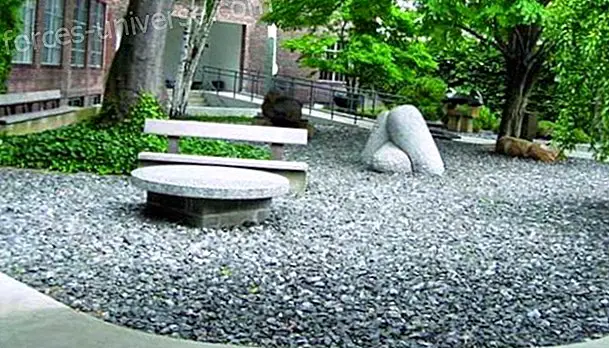
The most important thing to create a school garden is not to have the right space to do it, is to want to do it. If the effort is going to be of a single teacher, if the entire School Center is not involved, it is very difficult for the garden to move forward, the easiest is that in the medium-long term it will fail. The garden in the school should be a transversal axis at all levels and in all disciplines, since through the work in the garden many capacities contemplated in the general educational objectives of the different educational stages can be developed. To cite the next objectives, I highlight some of them in summary form:
CHILD EDUCATION
- Discover and use your own motor, sensory and expressive possibilities.
- Progress in the acquisition of habits and attitudes related to well-being and personal safety, hygiene and health strengthening.
- Observe and explore your physical and social environment.
- Value the importance of the natural environment and its quality for human life.
- Observe the changes and modifications to which the elements of the environment are subject.
PRIMARY EDUCATION
- Know and appreciate the body itself and contribute to its development, adopting health and wellness habits.
- Collaborate in planning and carrying out group activities.
- Understand and establish relationships between facts and phenomena of the natural and social environment.
- Identify and raise questions and problems from daily experience.
COMPULSORY SECONDARY EDUCATION
- Know and understand the basic aspects of the functioning of the body itself and the consequences for the individual and collective health of personal acts and decisions, and assess the benefits of the habits of physical exercise, of balanced hygiene and nutrition, as well as leading a healthy life.
- Engage with other people and participate in group activities with solidarity and tolerant attitudes.
- Analyze the basic mechanisms that govern the functioning of the physical environment, assess the repercussions that human activities have on it and actively contribute to the defense, conservation and improvement thereof.
- Develop identification strategies and problem solving in the various fields of knowledge and experience.
.
The school garden is an increasingly well-known and used educational resource, as such, it is clear that the pedagogical criteria must prevail over the agricultural ones, that all their approach and tasks have to make sense for to help us in our teaching activity. It is not without more than one plot in which we grow tomatoes and lettuce, but we must understand it as a space within the Center in which we will address a series of contents aimed at developing the abilities of our students.
With the garden tool we will be able to work, for example, laterality, space-time orientation, fine motor skills, exploration with the senses, we can ask questions and develop research strategies, make observations of living beings, interrelate concepts of various areas… We can also work the language through riddles, sayings; history tracking the origin of crops and their use in different cultures; the mathematics calculating surfaces to pay, quantities of seeds, weights collected, etc.
And in addition to all this, we can prolong the work in the classroom by developing calendars, graphics about the weather, researching on the internet or in the library, transforming the fruits obtained into jams, dyeing garments with some of the plants collected, etc.
With these and other activities we develop socialization and teamwork, organized, sequenced and respecting natural shifts, we favor the assessment of our own effort and its relationship with the appreciation of the products achieved, the importance of constancy and order, etc. .
Working with such primary and vital elements as food, water, earth and sun, the school garden provides us with the ideal support for the tangible spirit of the boy and girl to materialize.
Objectives of the school organic garden






